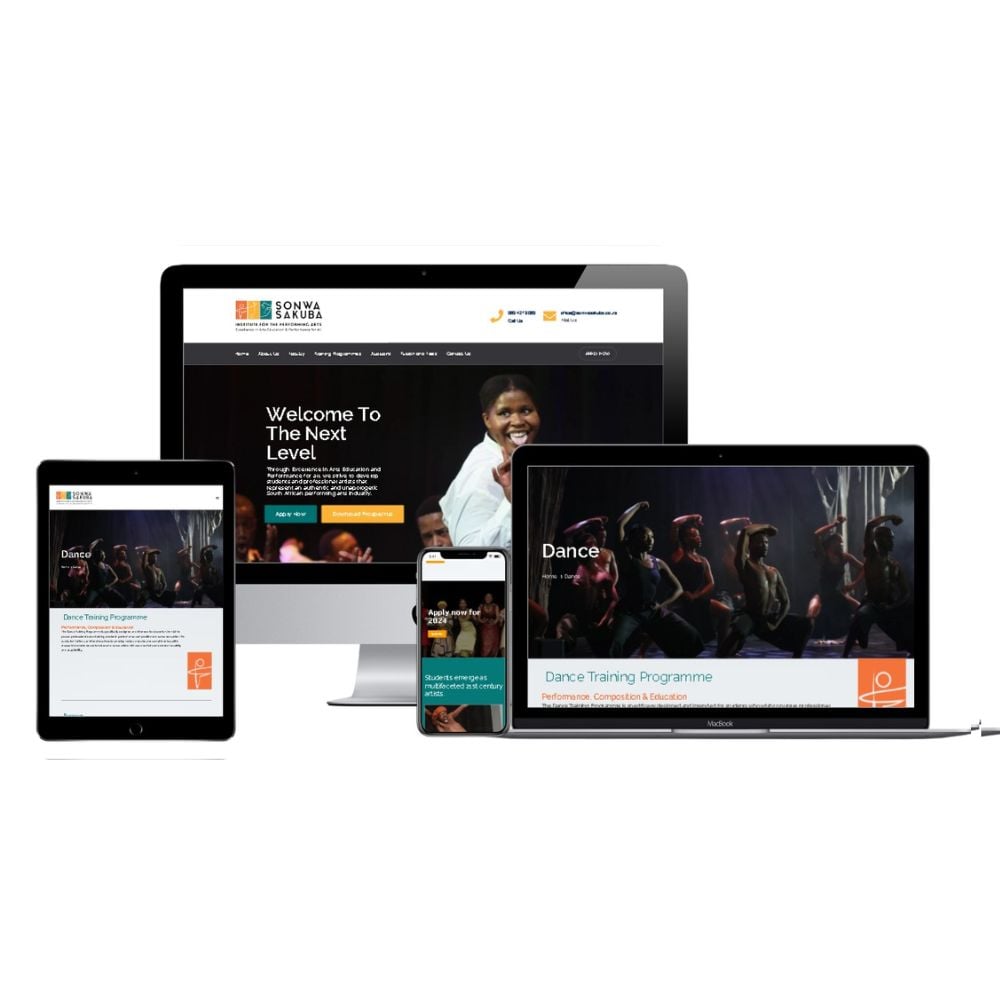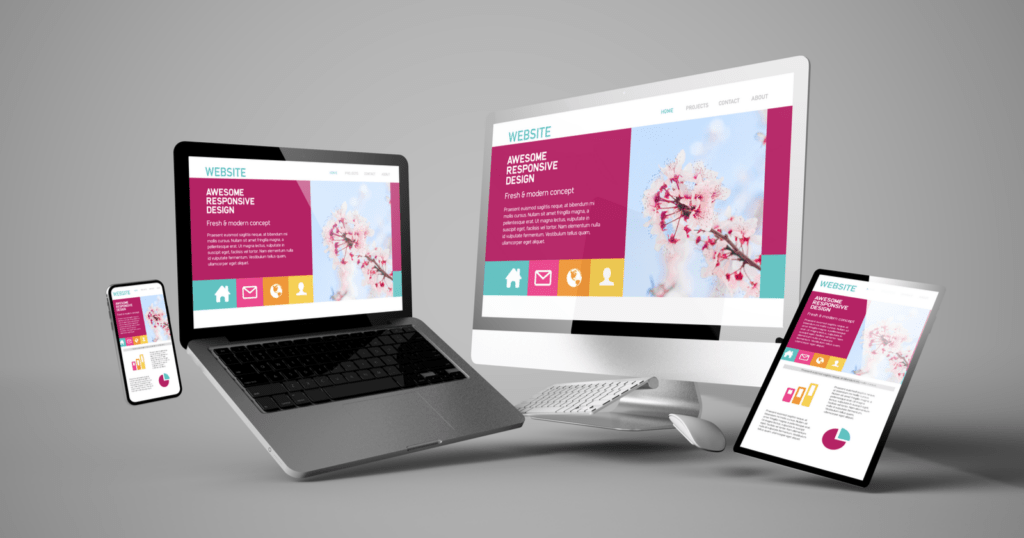Mobile-Friendly Website Design for Seamless Viewing on Any Device
Mobile-Friendly Website Design for Seamless Viewing on Any Device
Blog Article
Top Tips for Creating an Impactful Website Design That Converts
In today's electronic landscape, the significance of an impactful website style can not be overemphasized, particularly when it comes to converting site visitors right into consumers. To attain this, one have to consider a selection of elements, including understanding the target audience, focusing on customer experience, and maximizing for mobile platforms. Additionally, the critical usage of compelling call-to-actions and a well-defined visual power structure plays an essential role in guiding users through their trip. As we explore these essential components, it ends up being apparent that the success of your website pivots on more than simply visual appeal; it calls for a thoughtful technique to style and performance.

Understand Your Target Audience
Recognizing your target audience is essential to efficient internet site design, as it lays the foundation for creating an appealing customer experience. Identifying who your individuals are, including their demographics, preferences, and habits, allows developers to tailor the site's material, format, and capability to fulfill specific needs.
Conducting detailed market research is important in this procedure. Studies, meetings, and analytics can give valuable insights right into customer assumptions and discomfort points. By compiling this data, designers can create individual characters that stand for various sections of the audience, making sure that layout choices are educated and pertinent.
Furthermore, recognizing the target market aids in choosing suitable design elements such as color plans, typography, and imagery that reverberate with customers. A web site that speaks directly to its target market cultivates a feeling of connection and count on, encouraging longer visits and greater conversion rates.
Ultimately, a user-centered strategy to internet site layout not just enhances customer satisfaction yet likewise sustains business purposes by driving interaction and loyalty. By focusing on the needs and choices of the target market, a site can effectively offer its function and achieve preferred outcomes.
Prioritize Individual Experience
To boost the general effectiveness of a site, prioritizing customer experience (UX) is necessary (Website Design). A well-designed UX makes sure that visitors can navigate the website effortlessly, find details rapidly, and involve with content meaningfully. This brings about enhanced customer fulfillment and greater conversion rates
Begin by applying user-friendly navigating. Menus should be rationally structured, permitting users to find key areas of the site with minimal initiative. Consistency in style aspects, such as color pattern and font styles, fosters experience, which is crucial for maintaining individual involvement.
Additionally, think about the packing rate of your internet site. A hold-up of simply a couple of secs can cause substantial drop-offs, as users are much less most likely to wait on a slow-loading web page. Enhancing photos and optimizing code can improve performance and retain visitors.
Furthermore, quality in material discussion is essential. Usage succinct, appealing language and separate text with visuals to enhance readability. By focusing on customer experience, you not only create an extra satisfying atmosphere for visitors yet likewise strengthen your brand name's reputation. Eventually, a concentrate on UX is an investment in the long-term success of your internet site.
Maximize for Mobile Gadgets
Maximizing for mobile gadgets is critical in today's digital landscape, where a raising number of users gain access to websites with smart devices and tablets. A mobile-friendly Check This Out style not just boosts user experience yet also plays a considerable duty in improving online search engine positions. To achieve this, it is important to take on a receptive design that immediately changes to numerous display sizes and orientations.

Packing speed is another crucial factor; mobile users are commonly much less individual and anticipate rapid access to details. Optimize pictures and leverage web browser caching to improve efficiency. Ultimately, test your website on numerous devices and screen resolutions to identify and rectify any kind of click for info possible usability concerns. By prioritizing mobile optimization, you ensure that your web site remains affordable and properly engages a more comprehensive audience.
Usage Compelling Call-to-Actions
A site's performance frequently rests on its ability to assist site visitors toward desired actions, making engaging call-to-actions (CTAs) essential components of style. CTAs work as the crucial factors that direct customers to involve with the website, whether that suggests making an acquisition, enrolling in an e-newsletter, or downloading and install a resource.
To create efficient CTAs, clearness is critical. Use concise language that plainly connects the activity you desire the individual to take.
Moreover, the design of CTAs need to stand out without being obtrusive. Use contrasting shades and clear font styles to ensure they record focus. In addition, take into consideration utilizing directional hints, such as arrows or photos, to direct users towards these buttons. By concentrating on these elements, organizations can dramatically improve user involvement, driving conversions and eventually achieving their internet site's goals.
Emphasis on Visual Power Structure
Efficient internet site design depends greatly on a well-structured visual pecking order that overviews customers with web content perfectly. By arranging components in a manner that site that prioritizes details, designers can enhance customer experience and help with decision-making. This includes utilizing size, color, comparison, and spacing purposefully to draw interest to one of the most important components of a website.
The usage of bigger fonts for headings and subheadings establishes a clear distinction in between various areas, enabling customers to check material effortlessly. Furthermore, using different colors for buttons and calls-to-action can catch user attention and motivate communication. Whitespace is one more essential component; it avoids clutter and allows individuals to concentrate on essential messages without diversions.
Photos and graphics need to enhance the text while also adhering to the recognized pecking order, reinforcing the overall message (Website Design). Consistency in design elements, such as color pattern and typography, more reinforces the aesthetic power structure, making navigating intuitive

Final Thought
In conclusion, reliable web site design demands an extensive understanding of the target market, prioritization of customer experience, and mobile optimization. The calculated use engaging call-to-actions and a well-defined aesthetic hierarchy additionally enhances individual engagement. By applying these concepts, sites can attain higher conversion rates, ensuring that style components not only bring in visitors but also promote seamless navigating and interaction. Inevitably, a well-executed site layout acts as a crucial component in driving customer actions and accomplishing business objectives.
Report this page